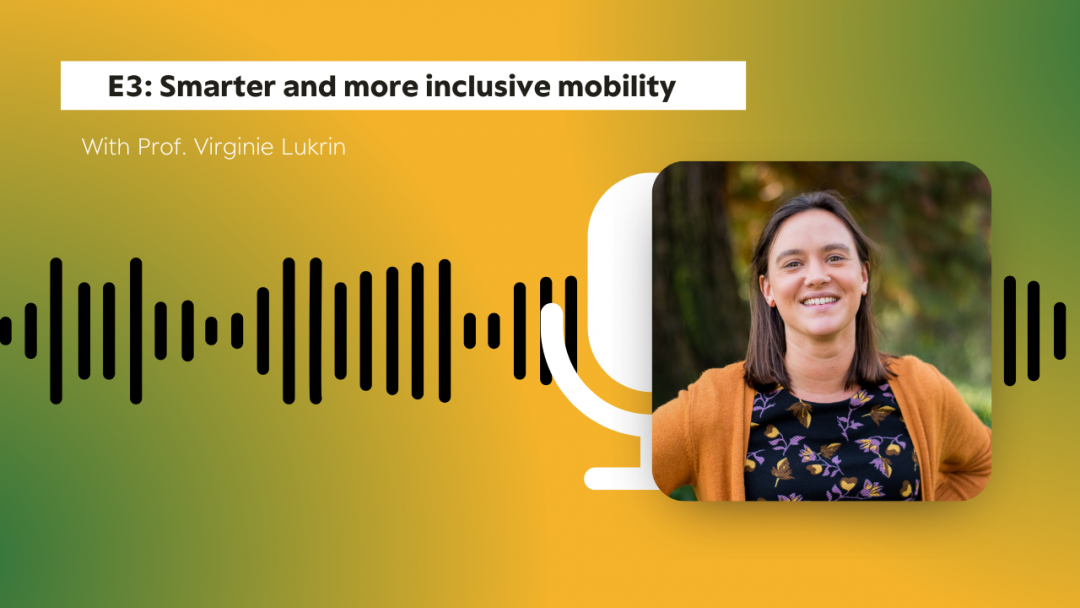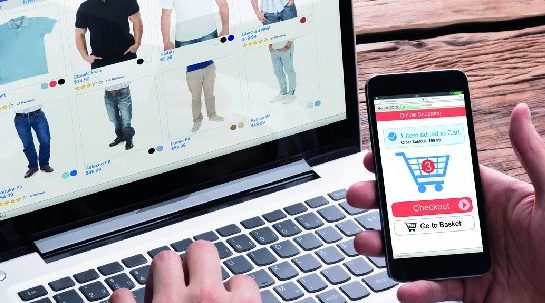Like many other sectors, the world of transportation is experiencing a period of profound disruption. From the sharing economy to mobility-as-a-service, autonomous vehicles to solid state batteries, new technologies, business models and social trends are transforming the way passengers and freight travel. Olivier Gallay, Assistant Professor at HEC Lausanne and an expert in operations research, explains how his work in transport optimization is helping to shape the future of transportation.
What area of research are you involved with?
I’m an applied mathematician who focuses on operations research and the optimization of various systems arising in logistics, transportation, and supply chains. Recently I spent four years with the transportation optimization team at IBM Research in Zürich, for example, working on the optimization of different aspects of transportation, from trains to car traffic to pricing for airlines.
At the University of Lausanne I’m still working on these types of problems, primarily on the operational aspects of transportation networks, focusing on real problems that emerge from practice, usually with industry partners. A good example is the vehicle routing problem. You have a set of locations to visit, for parcel delivery, for example, and you have to find a set of optimal routes, visiting a certain number of clients, focusing on a specific objective to be optimized, whether that is distance travelled, CO2 emissions, the number of vehicles, or the time taken.
What public organizations use someone with your skills to investigate these kinds of optimization problems?
There’s mainly the state – government, policymakers, and regulators.
From a general perspective, mobility is increasing. Take the growing populations of cities and the increased numbers of passengers, or the increase in freight because e-commerce is booming for example. This trend is likely to continue for at least a decade, as drastic societal changes would be required to reverse this tendency. Even more efficient transport systems are reinforcing this trend. Improve train speeds, for example, and people live further away and commute further to work. The quicker and easier it becomes to have home deliveries, the more people will order online.
Accordingly, optimization and efficiency in the transportation system will lead to increasing demand, in the short and mid term at least. Which in turn means greater mobility, more people travelling, more freight to be delivered, and the associated problems – congestion, pollution, sustainability issues.
Presumably commercial organizations are also keen to use transportation optimization? Trying to drive down costs or improve customer service, for example.
Yes. But while these organizations may be motivated by cost reduction or customer service improvement, an additional motivation is often to discover solutions to new and emerging problems when no suitable solution currently exists.
For example, a big trend at the moment is mobility-as-a-service. The idea that people do not own a vehicle, but take advantage of shared transportation systems – on-demand mobility. As a result, an organization involved in delivering mobility-as-a-service may operate a fleet of vehicles, it could be cars, e-scooters, or bicycles, for example. There are various challenges involved in operating such a service. For example, given a specific service level – let’s say that 99% of the time a customer will have a vehicle assigned within five minutes – you might try to develop methodologies to determine the optimal number of vehicles to operate in order to meet that service level.
What are some examples of transportation optimization projects that you have worked on?
One problem that I worked on recently was with a big energy provider in Europe. The firm had a number of engineers that visited customer’s homes every day to do maintenance work. A job typically took between 5 and 30 minutes. Each engineer had their own car, but a lot of the time the car wasn’t in use. In fact in urban areas most workers parked their car for a long time, happy to find a parking spot, then walked to a number of different premises in the vicinity.
The company had a huge fleet of vehicles, with some 1000 workers driving more than 2 million kilometers a year. The organization wanted to know if it was possible to find and implement a solution that would allow it to tell workers where to park and the best order to visit premises in. It also wanted to consider whether ridesharing might be more efficient than each engineer having their own vehicle.
With a problem like this a firm might want to optimize several factors. It could be the number of workers involved, the number of cars used, and then the number of kilometers driven. Part of the challenge is evaluating the potential conflicts and trade-offs between these different objectives. With ridesharing, for example, you may reduce the number of vehicles used but then have to make too many detours to drop off passengers, which may increase the distance travelled.
What did you discover?
We developed a solution which showed that, in most cases, it was possible to have a win-win situation by reducing both the size of the vehicle fleet and the distance travelled. Incorporating ridesharing, on top of allowing the engineers to park their cars and walk between some of the premises, reduced the car fleet by 8.2% on average and, at the same time, reduced the number of kilometers by 5.4% on average. Indeed, the ridesharing compensates for the extra distance incurred by the detours to transport passengers. Equipping the workers with an e-Kick scooter led to further gains – 14.1% on average, regarding the car fleet reduction, and 9.2% on average, for the distance travelled.
What about another example?
In another project we were looking at multimodal transport for the delivery of goods. Indeed the future of transportation partly lies in the use of different modes of transport to complete a journey. Indeed, we may want to take advantage of different types of vehicle with different characteristics. Drones, for example, are fast and environmentally friendly, but they have low charging capacity and limitations in terms of the distance they can travel on their own. Vans can carry more and travel further, but are more polluting. It is the same for passengers. Bicycles are good for the environment, but impractical if you’re travelling long distances. So there are usually trade-offs.
An associated problem is synchronizing the different forms of transport involved. If you have a drone on board a vehicle, the drone will have to leave the vehicle at some point, and then return. If a passenger is taking a train and renting a bicycle there needs to be a bicycle available at the appropriate time and place. That’s where a lot of the complexity arises.
What type of organization did you work with on this project?
This was a major player in the car industry that wanted to provide a mobility-as-a-service freight solution. It wanted to combine a new prototype van with a second, greener, transportable mode of transport, that at some point would separate from the van to make deliveries autonomously – a mobile robot or a drone, for example.
Vehicle manufacturers realize that they are selling or will sell fewer vehicles and one way that these companies can evolve and survive is to provide fully integrated transport solutions. This organization planned to supply the vans and integrated robots or drones as a complete mobility-as-a-service package, along with an algorithm that enabled a service provider to calculate an optimal approach to using the vans for specified deliveries.
We managed to develop an algorithm that could solve the problem and optimize operations for between 100 to 150 parcels, enough to make it viable in practice. You can reduce a van fleet by up to 33% by replacing the use of some vans with the use of drones. At the same time you can cut down the distance travelled by vans up to 58%. The solution that we created is 15% cheaper, on average, than the conventional approach that was being used. Although the total travel distance – including the drones – is greater. However, the distance travelled by drones is cost-effective, and more environmental friendly.
That’s a big cost saving. So you produce something – an algorithm – that these firms are able to use to compute the ideal route and schedule for their employees and their vehicles?
Exactly. They input the appropriate data, the total number of parcels to be delivered and their delivery location, say. As well as various constraints, customers might need deliveries at certain times, drones may only be able to fly for a certain period of time, for example. So the data is input, the computer algorithm runs, it could take anything from a minute to 10 hours depending on the complexity of the problem, and eventually it produces an optimized solution for one or more dimensions while respecting any constraints accounted for.
Ideally you would be able to use dynamic information in addition to static data so you could reoptimize in real time, if a van is stuck in traffic, for example. But in this case we were doing a feasibility study on static data to highlight the potential of such new transportation paradigms – dynamic optimization is something that we would do in the future.
Even if firms optimize their own transport operations, presumably competition means transport networks are far from optimal overall?
It’s true that the future of transportation not only lies in sharing and multimodality, but also in collaboration. Too many organizations competing against each other in the same geographic space creates issues. If all passengers want their car to arrive within five minutes you need a lot of cars to fulfil that customer demand. Especially during peak times. If several companies are competing to provide that service it creates a situation which is far from optimal in terms of congestion and sustainability. Even though each company might individually be optimizing its own operations, the number of vehicles in use will be too large. So it is likely that a fully globalized system will be required at some point.
In freight there is considerable scope for increased efficiency overall. Take the load factor. The average load factor in a truck is less than 60% overall, because most of the time they make their deliveries and return unloaded. Additionally, there are multiple trucks, partially loaded, making deliveries to similar destinations, thousands of journeys daily – there’s huge potential for increased optimization through collaboration. There are already some initiatives in that respect. With freight transportation, for example, there is the European Technology Platform ALICE which aims to enable better collaboration on logistics and supply chain planning and control operations.
But a big obstacle to collaborative optimization is data-sharing and commercial sensitivity. Here maybe one approach to overcoming the privacy issue could be a blockchain cloud-based solution, where data-sharing can be facilitated, yet anonymized at the same time.
Presumably governments can help facilitate collaboration?
State regulators have an important role to play. They can provide incentives for organizations to behave in a socially responsible manner. If you keep increasing taxes on CO2 emissions, for example, eventually transportation organizations will be incentivized to collaborate as a sector.
It seems that the benefits from transport optimization extend beyond the company implementing them?
Generally, yes. While the main goal for a profit-based company operating in a competitive environment may be to reduce costs and increase profits, at the same time they are often benefiting society. If reducing transportation costs through optimization means reducing the numbers of vehicles on the road, the number of kilometers driven, and therefore reducing vehicle emissions, that’s good for society. It’s also good for customers who get better prices and service.
It’s very rewarding, working on these types of problem, where you can see a connection between the problem, the solution, and our daily lives. We all use transportation every day, we suffer the stress of traffic congestion, we experience the pollution, and we wonder what transportation systems of the future might look like as we see them evolve around us.
To be involved in helping to develop transportation systems that are good for the organizations involved, consumers, and society, is really satisfying. The work that we do, by focusing on practical cases, by creating suitable prototyping, and by showing that the developed solutions can be win-win, helps to foster the participation needed to build critical mass and deliver the best transportation systems for the future.
Related research paper: Coindreau Marc-Antoine, Gallay Olivier, Zufferey Nicolas (2019). Vehicle Routing with Transportable Resources: Using Carpooling and Walking for On-Site Services, European Journal of Operational Research, 279(3):996-1010
Featured image by ID 72544382 © Kantver | Dreamstime.com




